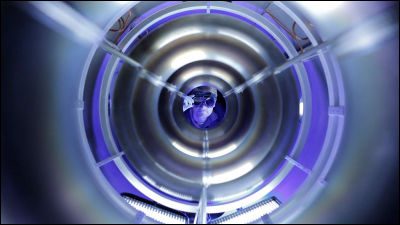Scientists create world's first 'carbon-14 diamond battery' that will power devices for thousands of years

Scientists from the University of Bristol and the UK Atomic Energy Authority (UKAEA) have developed a 'Carbon-14 Diamond Battery' in which carbon-14 , a radioactive isotope of carbon used in radiocarbon dating, is embedded in diamond. This battery uses the radiation of carbon-14 to generate electricity, and is said to be able to supply electricity for thousands of years.
December: Diamond battery media release | News and features | University of Bristol
https://www.bristol.ac.uk/news/2024/december/diamond-battery-media-release.html

World's 1st nuclear-diamond battery of its kind could power devices for 1000s of years | Live Science
https://www.livescience.com/technology/engineering/worlds-1st-nuclear-diamond-battery-of-its-kind-could-power-devices-for-1000s-of-years
In a statement on December 4, 2024, a research team from the University of Bristol and the UKAEA reported that they had 'successfully developed the world's first carbon-14 diamond battery.'
The carbon-14 used in carbon-14 diamond batteries emits radiation little by little during radioactive decay , and this radiation excites electrons in the surrounding diamonds. The battery captures these fast-moving electrons to generate electricity, a mechanism similar to that of a solar panel that converts photons into electricity.
The main feature of the carbon-14 diamond battery is that it has an overwhelmingly long life compared to conventional batteries. The half-life of carbon-14 is 5730 years, but in reality, it continues to emit radiation for a much longer period of time than that, so the carbon-14 diamond battery also has a lifespan of several thousand years or more.
A carbon-14 diamond battery containing 1 gram of carbon-14 produces 15 Joules of power per day. By comparison, a standard alkaline AA battery weighing about 20 grams has 700 Joules of energy per gram, providing much more power in the short term than a carbon-14 diamond battery, but with a much longer life span.

Carbon-14 diamond batteries, which protect carbon-14 with diamonds, do not pose any harm to the human body because the radiation emitted by carbon-14 is quickly absorbed by solid materials. Another advantage is that they have no moving parts and do not require maintenance. Therefore, they can be used in medical devices such as eye implants, hearing aids, and pacemakers, reducing the hassle and pain of replacing them.
In addition, their long life span of several thousand years could be used to power devices deployed in places on Earth where replacement is difficult, or as batteries in radio frequency tags that identify and track satellites and deep space probes drifting in space.
Professor Tom Scott, Professor of Materials at the University of Bristol, commented: 'Our micropower technology could support a whole range of critical applications from space technology to security equipment and medical implants. We are excited to explore all of these possibilities working with our partners in industry and research over the coming years.'
Related Posts:
in Science, , Posted by log1h_ik







